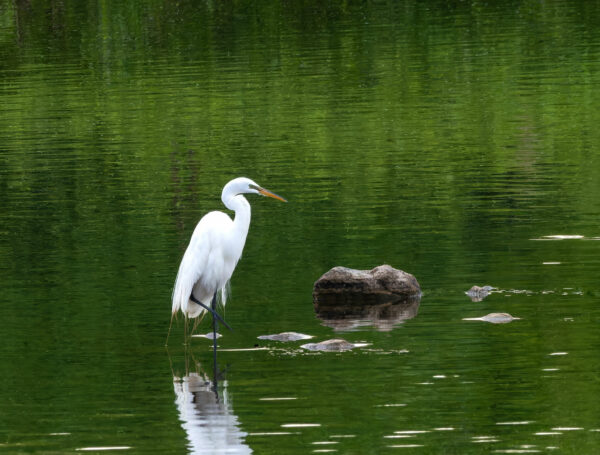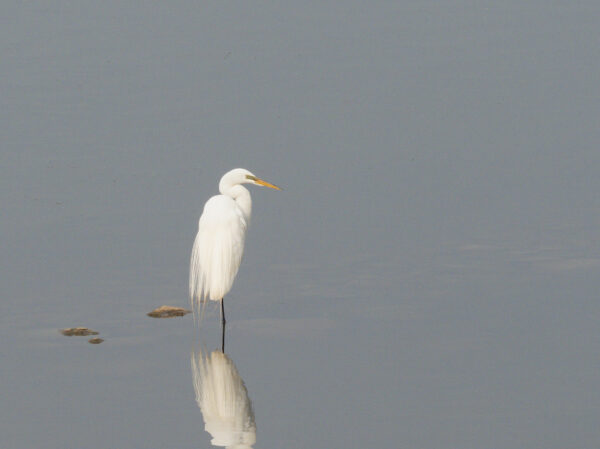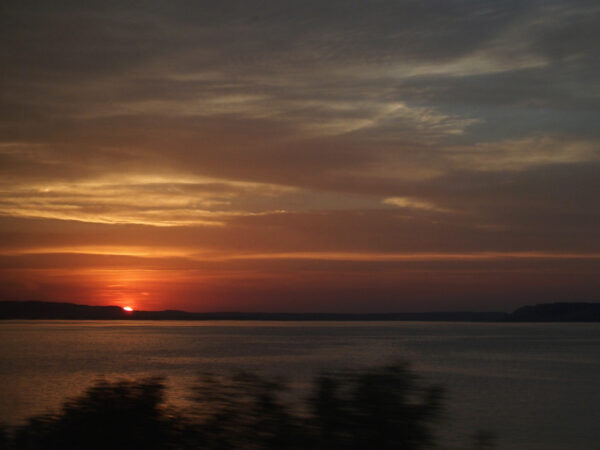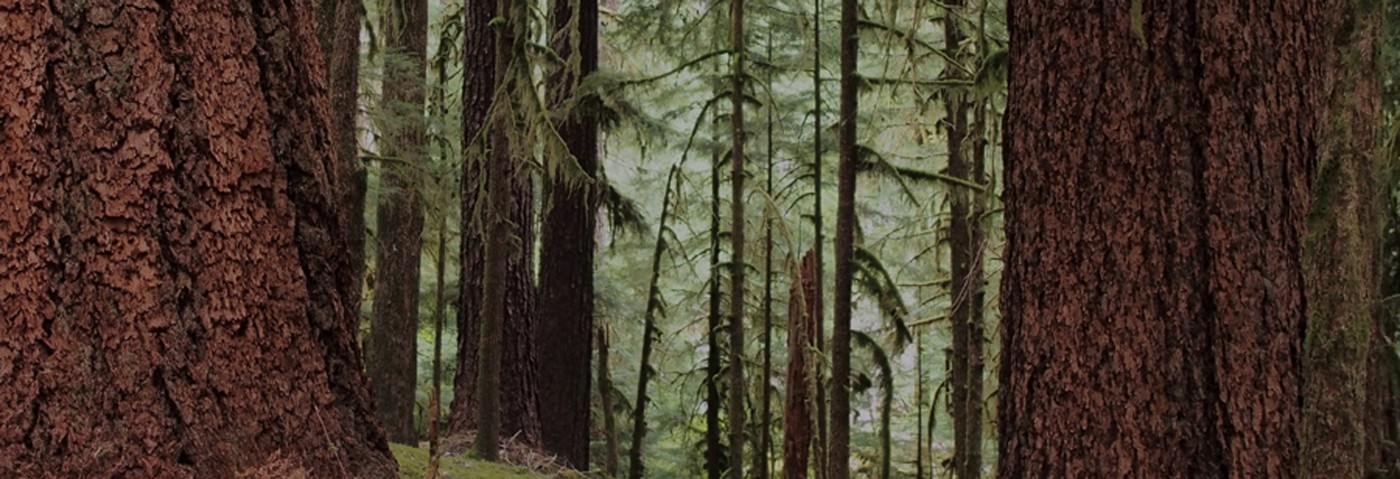The Egret, the Photographer, and the Universe
By John Palka — Posted June 19, 2022
The days have become markedly longer. The eye-catching creatures around us have become more abundant—there are birds everywhere still, but butterflies and damselflies and dragonflies are also beginning to appear. Flowers are starting to bloom.
In the midst of this abundance, I have been following my practice of spending time in Nature at least once a day and often twice. The camera I carry with me has been like an added eye, helping me see things that would otherwise have escaped my attention or happened too quickly for me to have registered them.
One recent morning, the photographs I was prompted to take led me to a rumination that I would like to share with you briefly.
The venue was a beautiful small lake in a park in the community in which we now live, Maple Grove, Minnesota. There is a walking trail around the lake, loved by grown-ups and children of all ages and many colors. I was walking in the early morning, however, and there were more birds to be seen than people.
The sight that first caught my attention was a great egret (Ardea alba, Family Ardeidae), a spectacular white bird that is found in many American wetlands. It was standing in very shallow water near the edge of the lake. When I first saw the bird, it glowed white against the rich reflections of the green vegetation along the shore behind it.

After watching the egret for a while and taking a number of pictures, I walked on. The egret itself remained virtually unmoving, but after I had taken not many steps, the scene changed strikingly. Instead of rich green, the background against which I saw the egret was the very slightly rippled surface of the water that the overcast sky made appear gray.

I took some more steps, and the scene changed again. Now the egret appeared a truly brilliant white, and the surface of the water splendidly smooth. The reflection of the egret in the water was evenly bright and did not have the marked shadows of a few steps earlier.

After a while, I left the egret still standing on one leg and continued my walk. As I walked, a question suddenly emerged in my mind. I had seen one egret, standing in one place. From the first picture to the last, I had moved only a few scores of yards and only nine minutes of time had elapsed. The camera was the same. The photographer was the same. And yet, the pictures were so different! How did this come to be?
What changed as I walked was the geometrical relationship between the egret, the camera, and the direction of the light. Every photographer is aware of the importance of this relationship. Moving either the camera or the subject even a few inches, or changing the direction of the light, all can affect the details of the resulting picture and hence the feelings it evokes. Photographers are keenly aware of this.
In this practical sense, there was no great puzzle. My relationship with the egret that morning, however, led my thoughts further. Where did the light, whose direction was so important, come from? It came from the Sun, of course. But what is the Sun? It is a star around which our home, the Earth, orbits. So, it was a star that allowed me to see the egret and it was a star that made the pictures I took from points separated from each other by only a few yards be so different.
I came to realize something important in a new way—we live in starlight! It is a star that glows in the sky and gives us our days from morning till dusk.

It is a star that allows us to see the world we live in.

It is a star that sheds light on the moon we love to see at night.

Our star, of course, is not the only one. If I look at the sky on a clear night, I see it filled with stars. The egret and I and our whole Earth relate to one star among a vast number of stars. And many of the points of light I see are not actually stars, they are whole galaxies each containing billions upon billions of stars. And beyond the stars and galaxies that I can see are untold numbers of others, out beyond the reach of even the most powerful telescopes we humans have built.
The Universe is filled with stars. We are tied to our own star, and through it to the rest of the starry Universe, every moment of our lives. Realizing this truth in a fresh way, starting with an egret glowing in the morning light in Maple Grove, Minnesota, made me feel grateful to be alive and at home in the Universe in a yet more profound way than I had felt before.
I invite you to try a similar exploration. As you go about your daily life, remember from time to time that you are living by starlight. See how that affects your sense of who and where you are.

What an absolutely glorious set of images and reflections!
Thank you, Sweetheart!
What a wonderful reflection (human words type of reflection) on this starry early morning! Thanks, Johnny!
Starry early morning indeed, Kit. The egret was out and glowing again. I saw him/her spearing a fish, and s/he was kind enough to provide a picture for my camera.
Thank you John for the stunning photos, peaceful nature and our relationship with it. Egrets are such magnificent birds, very interesting to read your observation as a photographer.
Egrets are magnificent birds indeed, Ranee. In some ways rather like classical dancers, don’t you think?
Dear John,
What a compelling and memorable reflection. Thank you. I am most taken by the astonishing difference there was in the picture when you shifted ever so slightly.
Your insight and fine writing about our living in starlight brought to mind the eclipse of a few summers ago. I was watching it from an island in the Puget Sound and we were aware that even 12 per cent of the sun’s light was enough to live on. And to think that the sun is just one star amidst billions of them!
Warmly,
Julie
Julie, you prompted me to retrieve one estimate of how many stars there are in the Universe. This particular calculations suggests 200 billion trillion!
https://theconversation.com/how-many-stars-are-there-in-space-165370
Very beautiful photos and prose! Thanks, Johnny!
And thank you, Sue!
A lovely and insightful time as usual Johnny – many thanks..!! .
Marty
Thanks, Marty!
Thank you Johnny for sharing your thoughts with these beautiful words and images. So interesting to explore the idea of changing perspective (point of view), both at the level of images perceived with the eye and caught in a photo and at the level of thinking about our planet, our star, and the universe.
Thank you, Karen. Over the years, I have found that sometimes an observation turns into an experience. That experience leads to a new thought, and that thought, in turn, sometimes leads to another new experience. I am always very grateful when this happens. When, like with the glowing egret last week, there is an appropriate occasion to share my experience, I’m grateful for that as well.
Thank you for such a great article. I read with interest from where I live in Swansea, Wales, UK. Tomorrow I plan to visit the local wetlands centre near Llanelli, just 18 miles from here. Here is their web site for interest.
Best wishes.
John.
https://www.wwt.org.uk/wetland-centres/llanelli
Many thanks, John. I followed the link – it looks like a wonderful place. When I looked on the the
“What’s on?” page, I saw dragonflies and damselflies that look very much like ones I photographed here in Minnesota just yesterday! Enjoy your visit.
Thank you John,
I’m always delighted when I see a post from you… I know I’m in for a soul touching experience. Your reflections and the egret reflection are indeed mirrorlike.
Thank you, Lynn. It’s wonderful of you to say that.
Wonderful. The aesthete in you came out good. The infinite nature of the universe and the wonder you describe reminded me of the first verse of Purushasukta from Rigveda. The nature of perception described leads to the idea of Maya…so many esthetics and philosophical ideas in your you writeup!
Thanks, Godan. I don’t usually write about it directly, but ideas from Hindu philosophy permeate my own conceptions about the nature of the Universe and of our presence within it. We could talk at length about Maya, though – in most interpretations I have read, it is actually one of the ideas that I strongly disagree with!
Once again you have illuminated with glorious astonishment something amazing that we overlook! I have no words good enough to express my delight at reading your egret, light, and star reflections and looking at those stunning pictures. I am going out in nature as soon as I finish this, with new “glasses” on!!! Shine on, you STAR you!
As they say, Shambhavi, it takes a star to know one!
That is beautiful, Johnny. Please keep your beautiful photos and thoughts coming. They are inspiring.
I’m going to pass them on to my cousin in Kyoto, and to some of my friends.
I hope you are sharing with others from Swarthmore, particularly class of ’60.
Thank you, Michael. I’m honored that you would pass the post on! I know that several members of Swarthmore ’60 are on my subscriber list but it’s not a large number, perhaps a dozen or so. I’ve never felt entitled to announce Nature’s Depths on our listserve.
Veľmi pekný a zaujímavý článok od milovníka prírody. Krásne popísané pocity človeka ako súčasť vesmíru.
Prajeme ešte mnoho takých krásnych pocitov a zážitkov prežitých v zdraví a šťastí.
Srdečne pozdravuje
rodina Šebíková
Milí Šebíkovci, veľmi pekne ďakujem a Vám tiež prajem zdravý život a krásne zážitky. Váš Janko
I am also a photographer of the natural world. Isn’t it astounding that an hour can pass by while watching in amazement…and I could have sworn it was only minutes! I just love how you connect science and awe. Thank you for a beautiful post!!
Thank you, Karen. I looked you up and found Karen Vail Photography listed on Cape Photography. When I looked at the pictures, I immediately recognized a strong resonance between the way you and I see nature and relate to it. Thank you for your words and for connecting! By the way, during the 1980s I did a lot of summer teaching at the MBL in Woods Hole in a course called “Neural Systems and Behavior.” It was a great experience.
Thank you for those splendid images and reflections, Johnny. By the way, I’m sure the Swarthmore ’60 listserv would like to know about Nature’s Depths.
Thank you, Will. I think I will take you up on your suggestion about the Swarthmore ’60 listserve!
What beautiful reflections Johnny. We are here because of starlight and we are starlight. I so look forward to immersing ourselves in nature in July it will be such a gift!
It will be a gift indeed, Katherine. Plus, I will get top share time with such dear friends!
Thanks, Johnny Inspiring reflection in all senses of the word. I’ve been missing your posts since I know you’ve been working on your book, so it was wonderful to connect.
Thank you, Marten!
Like Godan, I went very philosophical with your post, but I focused on the the first pictures and your comments about the pictures themselves. I am thinking about how just slightly different views can lead to strikingly different experiences, both esthetically and emotionally. Each viewpoint being equally valid and true and yet perhaps seemingly contradictory. Diversity in unity! Thank you for facilitating my absorption!
Thank you, Marc. The point you make is one I think about almost daily. In fact, it is part of what brought me into biology when I was a college student! One biological perspective on it is that different organisms have evolved different ways of sensing the world (think, for example, of the far greater importance of olfaction to dogs than to us humans). With different ways of obtaining information from the surrounding world, it is necessarily true that what they recognize about the world around them is different from what we recognize. There is a classic paper on this theme by the philosopher Thomas Nagel called “What Is It Like to Be a Bat?” You can read about it here: https://en.wikipedia.org/wiki/What_Is_It_Like_to_Be_a_Bat%3F
Dear Johnny, Your observations along with your moving photographs managed to reveal the beauty of stillness that is the egret and the water and space and the stars. What a dance! I felt drawn into your wholeness, and holiness. Thank you dear…
Hi Johnny, ah I loved your photos and the enlightening rumination…I so enjoy us having our own star…and delight in idea of living in starlight…the sun is out today and particularly this spring we having been missing the sun, our living giving star. Here’s to starlight!
I agree, Bonnie. Here’s to starlight!
I love this, Johnny, both the images of the egret in the lake and your rumination about living in starlight! I love the beauty of the egret in its solemn stillness; it takes me to a place of stillness, too. And with the starlight we know comes everything about the life we know—what a blessing, what a gift, a gift to us amidst the vastness. Thank you for this gift to us!
I’m glad, Mary Lou. I had similar experiences and a similar feeling of gratitude. My gratitude wasn’t directed to anyone in particular, it was just a general sense. In perhaps a circular way, I have repeatedly been grateful that gratitude is such a big part of my personal experience.
Hi John. Having just met you I have only discovered your wonderful blogposts today. This entry about perspective interests me because the idea of how things can look quite different depending on our perspective, or our angle, or our point of view is something that I wish everyone would consider. Does the way we treat our neighbors depend on our own perspective? Can we place ourselves “in their shoes” to understand how they navigate the world? When just a few short steps completely changed the elements of the view your camera caught, perhaps we as humans should be more willing to take a few short steps to gain empathy with those whose life experiences have been much different than our own.
Hi Lynn. I think you have recognized a wonderful parallelism between visual experience and the domain of human relationships. We all experience life events from our own inner perspective, and that perspective is powerfully influenced by our previous experiences. To truly grasp the perspective of others, we need to engage with them – to take those steps you refer to. When we do, the consequences can be profound. Thanks for pointing out this lesson to us!